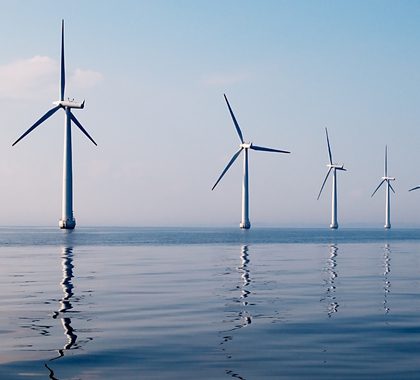The Ohio Power Siting Board (OPSB) removed seasonal restrictions enacted in May on the nighttime operation of a proposed offshore industrial wind facility.
As proposed, the Icebreaker wind facility would consist of six 3.45 Megawatt (Mw) wind turbines—nearly 500 feet tall—arranged a straight line approximately 8 miles north of Cleveland’s shoreline on Lake Erie. When OPSB approved the siting of Icebreaker, in May, it imposed operating restrictions, requiring the turbines to be shut down at night between March 1 and November 1 of each year to protect migrating bats and birds, and marine resources.
The Lake Erie Energy Development Corporation (LEEDCo), the non-profit public-private partnership developing the project, lobbied hard against the nighttime restrictions. LEEDCo referring to the restrictions as a “poison pill” that would make the project financially unfeasible, despite being able to claim federal subsidies in the form of either a 1.44 cents per Kilowatt hour production tax credit or an investment tax credit equaling approximately 30 percent of the projects’ capital costs that can be taken in the projects first year.
Lawmakers Weigh In, Restrictions Rescinded
The Cleveland Plain Dealer reports OPSB has been under tremendous pressure from state and local authorities to rescind its seasonal restrictions on Icebreaker’s nighttime operations.
Indeed, OPSB’s decision to reverse itself and withdraw the restrictions came just two months after board members received a letter signed by 32 lawmakers from Northeast Ohio urging the board to reconsider its prohibition.
Even with the nighttime restrictions reversed, LEEDCo still faces a variety environmental concerns it must satisfy before beginning construction on and operation of the Icebreaker industrial facility. OPSB and the Ohio Department of Natural Resources (ODNR) are requiring LEEDCo to develop plans to limit any harmful impact the wind facility might have on bats, birds, and fish inhabiting or migrating through the region. LEEDCo also must develop a decommissioning plan which OPSB must approve.
Disappointment and Hope
The Plain Dealer reports opponents of the Icebreaker facility, including the Lake Erie Marine Trades Association, the nonprofit Lake Erie Foundation and the Black Swamp Bird Observatory, expressed disappointment with OPSB’s decision to remove the seasonal restrictions on Icebreaker’s nighttime operations, and vow to push for the board to reimpose the restrictions at its next meeting.
“[The Nighttime rule was made] to avoid the wholesale slaughter of thousands of birds and bats migrating in the Lake Erie flyway,” Michelle Burke, president of the Lake Erie Marine Trades Association, told the Plain Dealer. “Icebreaker has never had a scientifically sound mitigation plan, we believe the Board will have sufficient grounds to reinstate such a condition at the next OPSB meeting.”
At least one OPSB board member, Mary Mertz, director of ODNR, has indicated further restrictions could be imposed on Icebreaker in the future.
“I’m sure we will tighten restrictions if the data shows we need to do that,” the Plain Dealer reports Mertz saying.
H. Sterling Burnett, Ph.D. (hsburnett@heartland.org) is the managing editor of Environment & Climate News.


























